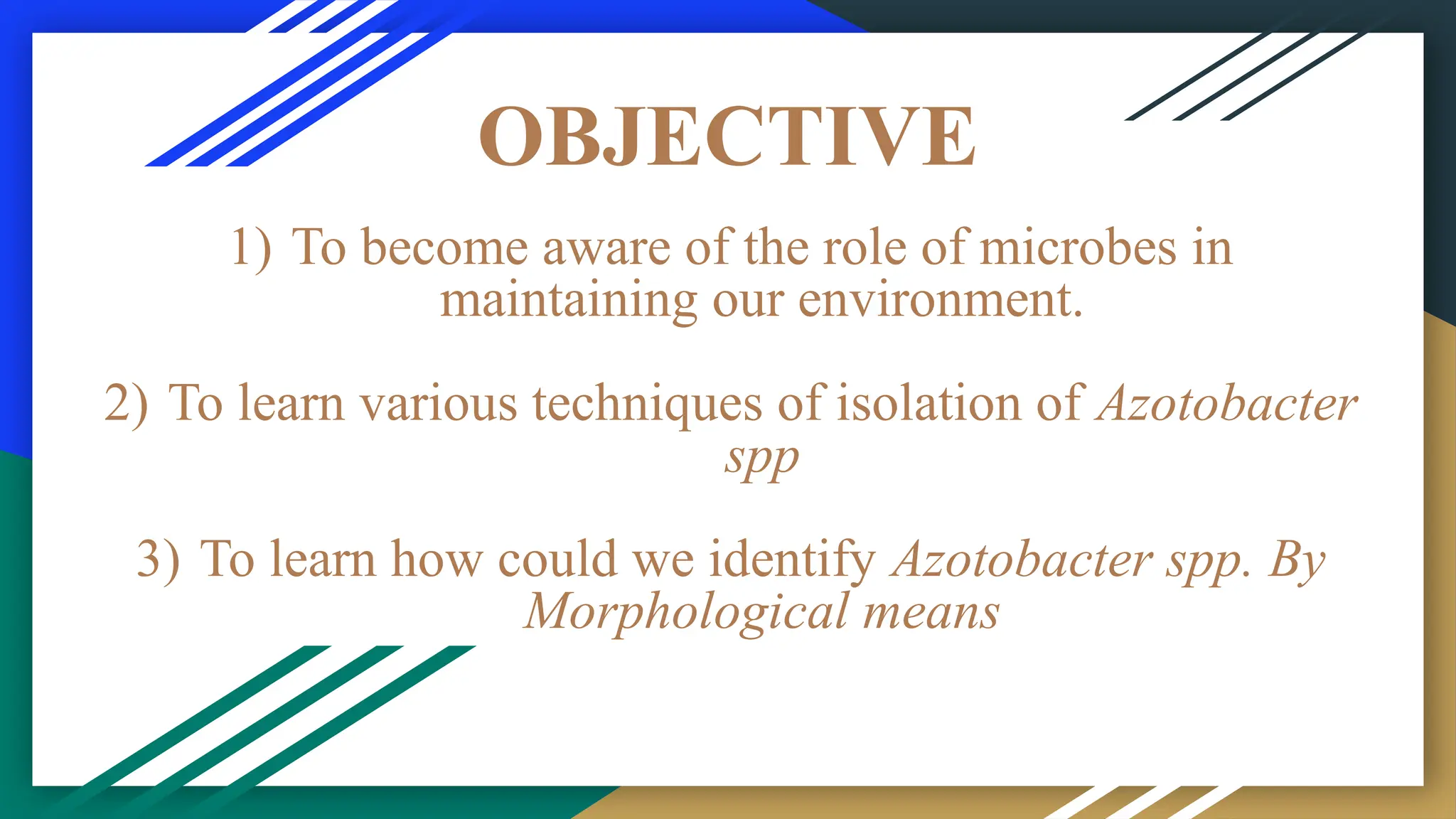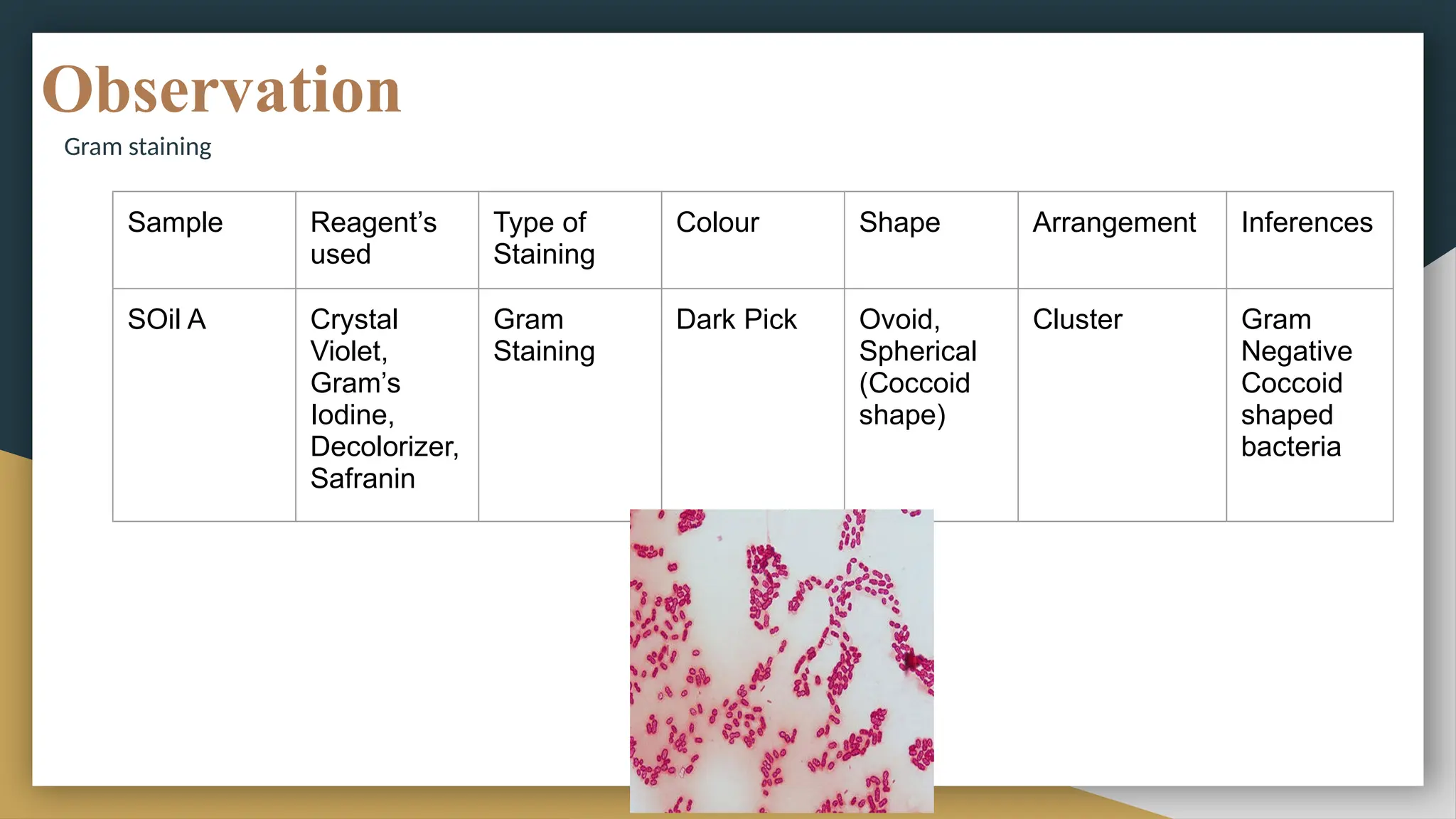Isolation and Identification of Azotobacter
This presentation covers the isolation and identification of Azotobacter, a free-living nitrogen-fixing bacterium. It includes its characteristics, culture methods, biochemical tests, and significance in agriculture for soil fertility and plant growth promotion.




















